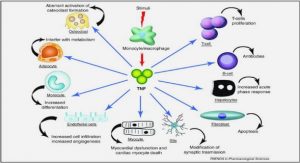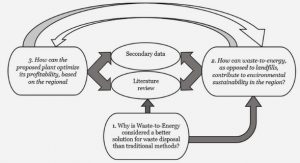Get Complete Project Material File(s) Now! »
Internalised Homo-negativity and Associated Negative Health Outcomes
With widespread agreement that same-sex sexuality is not a psychosexual pathology, many researchers have begun exploring the effects of internalised homo-negativity and cultural victimisation, often depicted as minority stress (Meyer, 2003), in order to provide a better account of the finding that gay men in general are at substantial risk of poorer mental and sexual health outcomes (Cabaj, 1996; Sandfort, Bakker, Schellevis, & Vanwesenbeeck, 2009). According to Stein and Cabaj (1996), the complex processes of physical, psychological, and social development among gay men during childhood and adolescence are generally complicated by the countervailing forces of internalised homo-negativity, pressuring them to reject an essential and integrative part of their identity (Stein & Cabaj, 1996). Furthermore, if the effects of internalised homo-negativity are compounded by incidents of overt discrimination or violence in response to their differentness, “the personality may be severely damaged, leading to serious impairment in the capacity for psychological, social, and work adaptation” (Stein & Cabaj, 1996, p. 415).
LITERATURE REVIEW ON FATHERS AND FATHERHOOD
Cultural constructions of fatherhood in general, and in the United States, especially prior to the 1970s, can be viewed according to two general strands of thought (Rohner, 1998) that have essentially associated fathers and fathering with a so-called deficit paradigm (Smit, 2004) or role inadequacy perspective (Dienhart, 1998). According to the first strand of thought, fathers were typically viewed as ineffective, often incompetent, and even biologically unsuited to the job of childrearing (Rohner, 1998). Here, the maternal counterpoint was that women are genetically endowed for childcare (Rohner, 1998). The second strand asserted that the influence of fathers on child development was unimportant, or at most, peripheral or indirect (Rohner, 1998). The maternal counterpoint to this strand of thought was that motherly love and competent maternal care provided everything that children needed for normal, healthy development (Rohner, 1998). Largely as a result of these two streams of thought, fathers and fatherhood as a socio-cultural phenomenon, were largely ignored or dismissed by mainstream behavioural science until well into the twentieth century (Barclay & Lupton, 1999; Rohner, 1998).
Historical Discourses and Cultural Representations of Fatherhood
Although the historical understanding of fatherhood is rather limited, it has been observed by most scholars that men‟s roles in the family have undergone numerous changes throughout time (Dienhart, 1998; Marsiglio et al., 2000; Smit, 2008). In reviewing the literature it appears that while there is some variance amongst writers as to the precise nature and timing of these sociocultural changes, there is at least some agreement around four phases or periods of documented changes in the West (Lamb, 2000). These phases or periods include the period extending from Puritan times through the Colonial period and into Republican times (e.g., father as moral guide), 87 the early nineteenth to mid-twentieth century (e.g., father as distant breadwinner), between the 1930s and 1940s (e.g. father as sex role model), and then again since the mid-1970s (e.g., father as nurturer and carer) (LaRossa, 1988; Lamb, 2000; Smit 2002). Although these documented changes are not considered to be universal, there is some evidence to suggest that these changes are mirrored in many other industrial and post-industrial societies, including South Africa (Smit, 2008).
Contemporary Discourses and Cultural Representations of Fatherhood
Conceptualisation of father, fathering, and fatherhood. Before discussing contemporary images of fatherhood, it may be useful to first explore how scholars understand the concepts of father, fathering, and fatherhood. In the Western world, it is generally recognised that a man becomes a father once he has impregnated a woman, and a child is born as a result (Morrell, 2006). However, modern technological advances such as in vitro fertilisation are challenging this traditional notion of what a father is (Morrell, 2006). In addition to these technological advances, the status of father does not always result from a biological process, as witnessed with social fathers (Morrell et al., 2003) in reconstituted families, including inter alia adoptions and step-family configurations (Morrell, 2006).
Conceptualising Father Involvement
Since the early 1980s increased attention has been given to exploring the level, predictors, and consequences of father involvement (Bruce & Fox, 1999). Early studies on father involvement emerged against a backdrop of growing concern about whether children were receiving enough fathering and whether fathers where doing enough to ease the childrearing burden of employed mothers (Pleck, 1997). As such, these early studies tended to focus only on the amount and not the kind of fathering children received (Pleck, 1997). For example, these early studies focused on the absence or presence of fathers, their financial contributions, and the amount of time they spent with their children (Saracho & Spodek, 2008). Many of these studies emerged alongside and as a result of the growing popularity of time use methodologies at the time (Lamb, 2000). It has also been observed that many of these studies involved small and often unrepresentative samples (Lamb, 1995a). Another problem was that the results of these studies varied considerably, largely as a result of researchers using different implicit definitions of paternal involvement, making it very difficult to compare results (Lamb, 2000). In an attempt to refine and expand upon these earlier conceptualisations of father involvement, Michael Lamb and his colleagues proposed a three-part model of paternal involvement (Lamb, Pleck, Charnov, & Levine, 1985)
The Antecedents of Father Involvement
Empirical research into the motivations behind or influences on father involvement remains quite limited (Lamb, 2000). Furthermore, the results of many of these studies appear to be largely inconsistent (Beitel & Parke, 1998). As such, relatively little is known about the precise factors that contribute to changes in father involvement in the child‟s life over time (Cabrera et al., 2000). In an attempt to address this gap, Lamb and his colleagues (Lamb et al., 1985) proposed that motivation, skills and self-confidence, social support and stress, and institutional practices be viewed as a hierarchy of factors influencing paternal behaviour. An underlying assumption of this four-factor model is that paternal involvement is multiply determined (Pleck, 1997). Therefore, each of the factors are considered to be additive (i.e., neither of the factors alone can adequately account for a father‟s degree of involvement), and interactive (e.g., for skills, self-confidence, and social supports to predict involvement, motivation needs to be present) (Pleck, 1997).
CONTENTS :
- ABSTRACT
- KEY TERMS
- GLOSSARY
- ABBREVIATIONS
- CHAPTER 1: INTRODUCTION
- Background and Motivation for the Study
- Aims of the Study
- Methodological Approach
- Outline of the Study
- Summary of Chapter
- CHAPTER 2: LITERATURE REVIEW ON THE EXPERIENCES OF GAY MEN
- The South African Socio-cultural Context
- Afrikaner history, culture, and identity
- Gay rights and social acceptance in South Africa
- Gay Identity Development
- Coming Out Experiences
- Parental Reactions and Adjustment Following Disclosure
- Broader Stigmatisation Process and Intergroup Contact Experiences
- Internalised Homo-negativity and Associated Negative Health Outcomes
- Summary of Chapter
- CHAPTER 3: LITERATURE REVIEW ON FATHERS AND FATHERHOOD
- Contemporary Discourses and Cultural Representations of Fatherhood
- Conceptualisation of father, fathering, and fatherhood
- Contemporary images of fatherhood
- Dissatisfaction with contemporary fathers
- Conceptualising Father Involvement
- The Antecedents of Father Involvement
- Motivation
- Skills and self-confidence
- Social support and stress
- Institutional practices
- Not forgetting the child’s influence
- Recent considerations of the transitions within fatherhood
- Identity theory as linked to fathers’ level of motivation
- The Influence of Father Involvement on Children and Fathers
- Paternal influences on child development
- Influence of paternal involvement on fathers
- (Heterosexual) Fathers and (Gay) Sons)
- Fathers and sons in general
- Afrikaans fathers and sons
- Heterosexual fathers and gay sons
- Summary of Chapter
- CHAPTER 4: RESEARCH DESIGN
- The Qualitative Research Paradigm
- The interpretive approach
- Research Design
- Role of the researcher
- Personal reflections
- Professional reflections
- Process-related reflections
- The research site
- Fieldwork
- The participants
- Data collection method
- Ethical considerations
- Data analysis
- Criteria of goodness: The quality and rigour of the research design
- Summary of Chapter
- CHAPTER 5: FINDINGS AND DISCUSSION
- CHAPTER 6: CONCLUSION
GET THE COMPLETE PROJECT
THE EXPERIENCES AND MEANINGS THAT SHAPE HETEROSEXUAL FATHERS’ RELATIONSHIPS WITH THEIR GAY SONS






